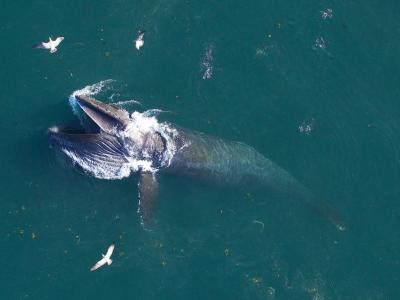The Antarctic minke whale can be described as the smallest of the ocean giants due to its smaller body size compared to other species in the baleen whale group, which also includes the giant blue whale. Furthermore, the minke whale is one of the most enigmatic baleen whales, living in the remote and frigid waters of the Southern Ocean. New research provides a clearer understanding of this species, focusing on its prey-hunting behavior known as "bottom ambush," where it surprises its prey from beneath. This method is shared with other members of its family, and ambush feeding is a technique in which whales open their mouths to engulf a massive amount of seawater containing prey like small fish and shrimp, then filter the water through baleen plates.
The research demonstrated that the Antarctic minke whale, which can grow up to a maximum length of eight meters, possesses the smallest possible body size to catch enough prey using this strategy. David Kydd, a marine biologist at Stanford University and one of the lead authors of the research published this week in the journal Nature Ecology and Evolution, stated, "This provides an answer that was not previously known regarding why all baleen-feeding whales are so massive, and why there aren't, for example, baleen whales the size of dolphins."
He added, "As a result, the evolution of this feeding method has implications if animals must reach a large size before this unique prey-hunting behavior develops, and once this method arises, the largest animals ever can evolve." Repeated bursts of activity require a high amount of energy, and the larger the body size, the more efficient the feeding becomes with this method. To effectively utilize this strategy, the ability to swallow large quantities of water is essential. Blue whales, which can reach lengths of about 30 meters, can swallow amounts of water equivalent to 135% of their body mass, but their smaller cousins, the minke whales, can only gulp amounts equivalent to 42% of their body mass.




